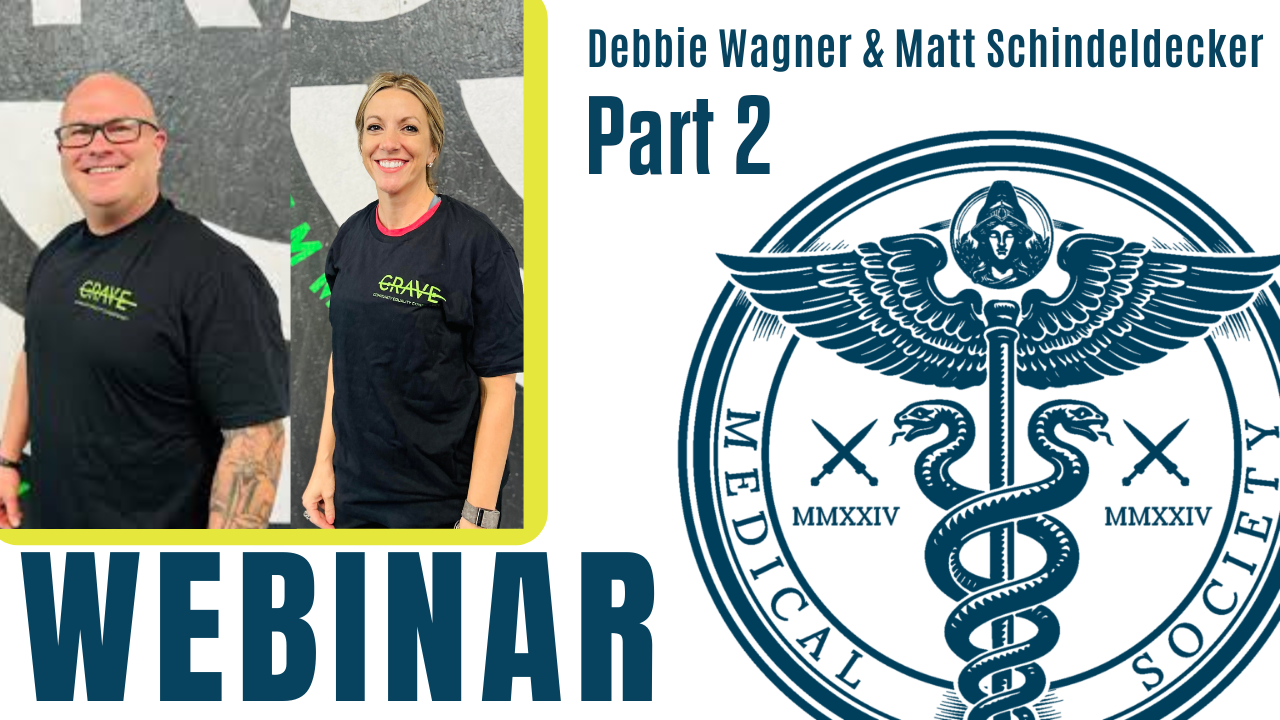By Malcolm Kendrick
In previous articles (1, 2, 3, 4) I have been analyzing the FOURIER study in some detail, and I will continue to do so here. Not because this research paper represents some weird outlier—the worst, of the worst, of the worst research ever. But because it is an excellent case study. Providing a clear window into the murky world of medical research today.
Thus far I have been using FOURIER to highlight issues around combined, or composite end-points, and how at best they can be made to show great benefit from a clinical trial, when there may have been little, or none, and at worst cover up harms.
This is such a common form of research manipulation that it even sneaks past the gatekeepers at journals as ‘respected’ as the New England Journal of Medicine (NEJM), which has the highest impact factor of any medical journal in the world. By impact factor I mean, in short, how often a journal is cited and referenced.
In a journal of such prestige, you might hope they would call a halt to the use of composite endpoints. Or at least rein things in a little. But no, not in the slightest. I am far from alone in my concerns about this. Here is the abstract from an article in the Journal of Clinical Epidemiology entitled ‘composite endpoints.’
“Studies often combine several events, for example, death or myocardial infarction or stroke, into a single study outcome. This is called a composite endpoint. Composite endpoints make doing trials easier by reducing the sample size or follow-up period required to demonstrate the effectiveness of an intervention.
“However, interpreting the results of composite endpoints can be confusing. To avoid misleading conclusions about the effectiveness of an intervention, it is important for readers of studies reporting a composite endpoint to ascertain that the clinical importance, the frequency of events, and the effect of the intervention on each component of the composite endpoint are similar.”
At least it can be said that composite end-points lie in plain sight. Or, at least they do for those who have played the ‘spot the data manipulation’ game for long enough. But there are other, deeper games which are far better hidden.
Sometimes you only know they exist by noticing the distorting effects they have on the surrounding data. Rather as the erratic orbit of Neptune pointed to the existence of another, as yet invisible planet, Pluto. [Which, yes I know, is officially not a planet anymore].
In an attempt to get a handle on such ‘invisible’ problems lurking out there, you have to look deeper into the data itself. So, hold onto your hats for another white-knuckle ride into medical statistics.
Time to strip data down to their component parts
To start with I am returning to the figures on cardiovascular deaths in the FOURIER study. Just to remind you of what they were.
Cardiovascular deaths in the Repatha arm = 251
Cardiovascular deaths in the placebo arm = 240
The fact that there were more CV deaths in the treatment/Repatha arm should have been a bad enough result, on its own, to torpedo this drug. It had one job to do…. Prevent cardiovascular death.
However, the composite end point was dressed up as a magnificent success. Successful enough to gain approval from the FDA and become a billion dollar a year blockbuster. The scientific term for this is ‘putting lipstick on a pig’.
However, contained within these two figures are far greater anomalies that should, hopefully, have been picked up by the peer review process – but they weren’t. Peer-review, just to side track for a moment or two, is held up as some sacred part of the scientific method. However, even Richard Horton, editor-in-chief of The Lancet, famously stated that:
“Peer review to the public is portrayed as a quasi-sacred process that helps to make science our most objective truth teller, but we know that the system of peer review is biased, unjust, unaccountable, incomplete, easily fixed, often insulting, usually ignorant, occasionally foolish, and frequently wrong.”
Strong words indeed, and not even mine.
However, the composite end point was dressed up as a magnificent success. Successful enough to gain approval from the FDA and become a billion dollar a year blockbuster. The scientific term for this is ‘putting lipstick on a pig’.
Some context:
A short background on cardiovascular deaths
The first point here is that a myocardial infarction (often called a heart attack) is by far the most common cause of CV death. Followed by stroke, in a ratio of around three to one. That is, around three MI deaths for each stroke. [2]
The second point is that MI and stroke make up, by far, the greatest proportion of CV deaths.
“More than four out of five CVD deaths are due to heart attacks and strokes.” [3]
I am sure it is possible to find slightly higher, or lower, figures than this. However, it is widely known that heart attacks (primarily myocardial infarctions) and strokes represent the vast majority of CVD deaths. In another document the WHO stated that 85% of CV deaths are due to MI, or stroke. [4]
What are these other causes of CV death? Heart failure is one, although this usually ends up with an MI being the terminal event. You can also have bowel infarction (a blockage in a major blood vessel to the bowel, leading to necrosis and death).
You can have situations where the heart simply stops beating, which will often be called a ‘heart attack’, but is not an MI. You can have such things as ruptured aortic aneurysms; the full list is long. However, although there are many of them, ‘other’ CV deaths remain relatively uncommon.
The next point to note here is that the majority of people who die from an MI (or stroke), will do so before they reach hospital. Therefore, improvements in hospital treatment, and there have been many, cannot greatly affect MI (or stroke) mortality.
The final fact to highlight here is that around one third of those who suffer an MI will die.
“After a first MI, on average, 23% of patients died before reaching the hospital and another 13% died during hospital admission; these rates increased with age. After hospital discharge cardiovascular mortality was approximately 10% in the first year and 5% per year thereafter, rates that were unrelated to age or sex. The yearly death rate of 5% persisted indefinitely.” [5]
In short:
- Around thirty percent of those who have an MI will die – two thirds before they reach hospital.
- Strokes and MIs make up around eighty-five percent of CV deaths.
- MI deaths outnumber stroke deaths by around three, or four, to one.
More detail on FOURIER deaths – with four major anomalies
Anomaly one
Here, I am focussing mainly on MI, to keep this article under some sort of control. So, to begin.
In the FOURIER study:
Deaths due to myocardial infarction Repatha arm = 25
Deaths due to myocardial infarction Placebo arm = 30
Which does seem to be a very low number indeed. Moving on, as around one third of people die from an acute MI, there should have been around seventy-five MIs in the Repatha arm, and ninety in the Placebo arm.
Here are the figures on total MIs (fatal and non-fatal combined)
Total number of MIs in the Repatha arm = 468
Total number of MIs in the placebo arm = 639
Instead of one in three MIs being fatal, in the FOURIER study around one in twenty were fatal. Or, to put this another way, the mortality rate was six times lower than expected.
It cannot have been the drug causing this unusually low death rate – through some unknown mechanism – because the percentage reduction in MI death was even greater in the group taking placebo.
Equally it can have had little, or nothing, to do with extraordinarily high-quality hospital treatment, because most people die before they arrive at hospital. Therefore, we are left with this:
Expected rate of death from MI = ~33%
Rate of death from MI in FOURIER = 5%
Anomaly two
Anomaly number two is that there were more deaths from stroke, than MI.
Looking first at the Repatha arm:
Deaths due to myocardial infarction = 25
Deaths due to stroke = 31
In the placebo arm
Deaths due to myocardial infarction = 30
Deaths due to stroke = 33
This is doubly difficult to understand, given that over eighty percent of those enrolled into the FOURIER study had suffered a previous MI. Meaning that a second MI was far more likely than a stroke.
In addition, as mentioned before, it is a universal finding that MIs are far more likely to be fatal than strokes.
In 2019 (the last year before COVID19 changed CVD figures in various ways) the total number of deaths from ‘heart disease’ in the US was 650K, and deaths from stroke were 150K. A ratio of 4.3 to 1. [6]
Whilst ‘heart disease’ death statistics will include a few deaths that are not MIs, these ‘others’ make up about ten percent max. Thus, data from the National Centre for Health Statistics demonstrate a ratio of four MIs to every stroke.
In the FOURIER study strokes accounted for fifteen percent more deaths than MIs, instead of four times fewer. This is anomaly number two.
Anomaly three
Anomaly three is something you may have noticed yourself. This study had over twenty-seven thousand participants, all specifically chosen to be at very high risk of cardiovascular disease. Over 80% had suffered a previous MI. Twenty percent a prior stroke, many had additional risk factors such as peripheral artery disease. The average age was sixty-two.
Despite the fact that this population was specifically chosen to be at extremely high risk, there were only fifty-five deaths from MI in total, in both arms of the study- over two years. This is a mortality rate of one per thousand, per year. Consider this passage again from The Journal of the American Medical Association (JAMA).
“After a first MI, on average, 23% of patients died before reaching the hospital and another 13% died during hospital admission; these rates increased with age. After hospital discharge cardiovascular mortality was approximately 10% in the first year and 5% per year thereafter, rates that were unrelated to age or sex. The yearly death rate of 5% persisted indefinitely.”
After a first MI, the rate of CV death is around ten percent in the first year. Then the risk then falls to around five percent, per-year, year on year. At least sixty percent of these deaths will be from an MI. This represents an on-going mortality rate, from MI, of around three percent per year.
In the years since that JAMA study was done fatality rates have dropped by about thirty percent. Which means that the current mortality rate from MI, in the years following a first MI, will be closer to two percent, per year.
Mortality rate, per year, in epidemiological studies = 2%
Mortality rate, per year, in FOURIER = 0.1%
This represents a twenty-fold difference in expected mortality rates. This is anomaly number three.
Anomaly four
Anomaly four is, perhaps, the most difficult to explain. We know that approximately eighty-five percent of CV deaths are due to MIs and strokes. Yet, in the FOURIER study the vast majority of CV deaths were recorded as ‘other.’
In the placebo arm of the study:
Death due to myocardial infarction = 30
Death due to stroke = 33
Other cardiovascular deaths = 177
In the Repatha arm:
Death due to myocardial infarction = 25
Death due to stroke = 31
Other cardiovascular deaths = 195
As there were one hundred and ninety-five ‘other’ cardiovascular deaths in the Repatha arm we would expect to see around thirteen hundred deaths from MI and stroke. Instead, there were fifty-six, which is twenty-three times lower than the expected rate.
Again, this cannot be a Repatha effect, as the figures are very much the same for the placebo arm. This represents anomaly number four.
Four significant anomalies in the FOURIER study
Anomalies:
- The death rate following an MI is more than six times lower than expected.
- The ratio of deaths between MI and stroke is skewed, perhaps by up to four-fold.
- The overall mortality rate from MI is twenty times lower than expected.
- There are, up to, twenty-three times fewer deaths from MI and stroke then would be expected, given the number of ‘other’ CV deaths.
When you see data as far from the norm as this, and heading off in all sorts of different directions, you wonder how this can be happening? At which point you begin the search for the other planet that must be out there. In this case you are not looking for something the size of Pluto. It is at least as big as Jupiter.
What name would you give it? I would call it planet gold. Because gold, as all know, is a very dense element, surrounded by a massive monetary field, one that can distort the very fabric of data integrity itself.
Had I been asked to be a peer-reviewer for this paper, a highly unlikely event – although I have peer-reviewed many papers over the years. I would have asked the authors how on earth they could explain these figures. “You had a mortality rate from MI of five percent, and deaths from MI and stroke was four times less than ‘other’ CV deaths? And that’s just for starters. What is going on here?”
Perhaps we can still ask those questions? If I am wrong or have missed something crucial I would love to have it all explained to me.
You think strange games with data are not, cannot, be played?
I will finish off here by looking very briefly at another study called EXCEL. Which was a comparison between coronary artery bypass grafts (CABG) and percutaneous cardiovascular intervention (PCI), putting in a stent, basically. It is alleged that, halfway through the trial, the definition of an MI was changed.
One surgeon, David Taggart was highly critical:
Taggart said he believes the trial was rigged to show an advantage of PCI over CABG surgery in patients with LMCAD*.
“What happened in EXCEL was a disgrace that halfway through the trial the definition of myocardial infarction was changed,” [7]
*left main coronary artery disease
The message from this is that it is no longer always possible to believe in the data themselves. Let alone the interpretation of those data. And when I see figures that I simply cannot believe, I wonder whether or not I should believe them. Which is a sad place indeed for medical research to have reached.
You may have noticed that I have been exceptionally careful with my use of words in this article. Primarily due to the proximity of planet Gold. Much gold pays for many lawyers.
Next, Placebos, and blinding of clinical trials.
References:
- Composite endpoints; Lia M. Palileo-Villanueva, Antonio L. Dans; Journal of Clinical Epidemiology, Volume 128, December 2020.
- Deaths registered in England and Wales; Office for National Statistics, UK.
- Cardiovascular diseases; World Health Organization website.
- Cardiovascular diseases (CVDs); World Health Organization website.
- The Underlying Risk of Death After Myocardial Infarction in the Absence of Treatment; Malcolm R. Law, FRCP, Hilary C. Watt, MSC, Nicholas J. Wald, FRCP; JAMA Internal Medicine, November 25, 2002.
- The Leading Causes of Death in the US for 2020; Farida B. Ahmad, MPH, Robert N. Anderson, PhD; JAMA, March 31, 2021.
- Former EXCEL Investigator Alleges Trial Manipulation, Prompting Vehement Denials; Michael O’Riordan; tctMD, October 07, 2019.
More From This Series
Setting Up The Trick
Research Manipulation Part I
Part 1
Surrogate End-Points
Research Manipulation Part II
Part 2
Deliberate Obfuscation
Research Manipulation Part III
Part 3
Falsely Reporting Success
Research Manipulation Part IV
Part 4
Placebos – The (Not) Nothing Pill
Research Manipulation Part VI
Part 6
If Placebos Are Not True Placebos…Then What
Research Manipulation Part VII
Part 7
Placebos. Trial Blinding, and Biomarkers
Research Manipulation Part VIII
Part 8
The Replication Crisis, And Where Placebos Fit In
Research Manipulation Part IX
Part 9
An Existential Crisis?
Research Manipulation Part X
Part 10
Scottish doctor, author, speaker, sceptic
Support the Broken Science Initiative.
Subscribe today →
recent posts
Metabolic Flexibility to Burn Fat, Get Stronger, and Get Healthier
Expanding Horizons: Physical and Mental Rehabilitation for Juveniles in Ohio



